Get Rid of Those Pesky Snags!
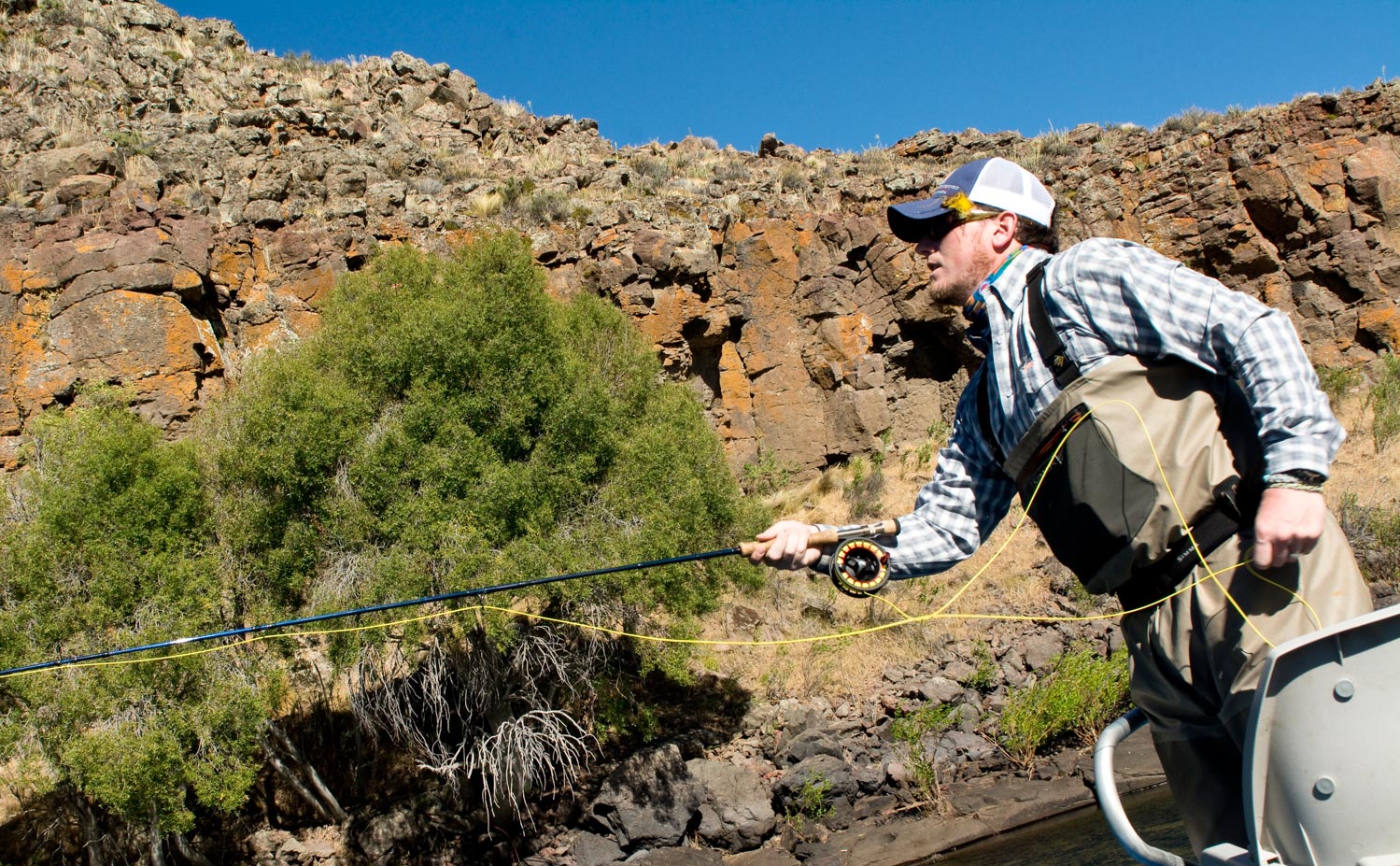
By Justin Pickett
IT’S JUST AFTER SUNRISE AND YOU’VE RUN FIFTEEN MINUTES.
From the boat ramp to the spot where you had previously gathered intel on where the stripers had been slamming schools of bait. There’s a short window though, so you’ve hurried to make sure you’re there when it all goes down. If you miss your shot, then it’s back to the truck with nothing to show for your morning’s efforts.
Your rods are strung up. Flies tied on. Knots checked. Drags are set.
As you work around a point and into one of the fingers of the lake you see the surface boiling. Stripers are crashing on bait with reckless abandon. As you reach the school you jump on the deck and grab your rod, stripping the line from your reel like a crazed lunatic. You make two false casts, slipping line each time, and on the third forward stroke you complete an epic double-haul. An awesomely tight loop speeds past you with your leader and fly in tow…. And then comes to a screeching halt and smacks down in the water, forty feet short of the feeding frenzy. Doh! (Raise dominant hand and accelerate palm towards forehead).
Those damn fly line trolls!
They like to gather up all of your loose fly line while you’re not looking and wrap it around things like coolers, seats, trolling motors, pliers, cleats, bags, straps, beer cans, puppies, etc, etc, etc. They have no mercy!!!
This has probably happened to every one of us in varying scenarios, and if for some reason it hasn’t happened to you, don’t worry, it will. Fly line has the uncanny ability to find things to get itself tangled up in. And believe me it will happen in a most critical moment if you’re not prepared to prevent it from happening.
Whether you are
Read More »Keeping it Clean
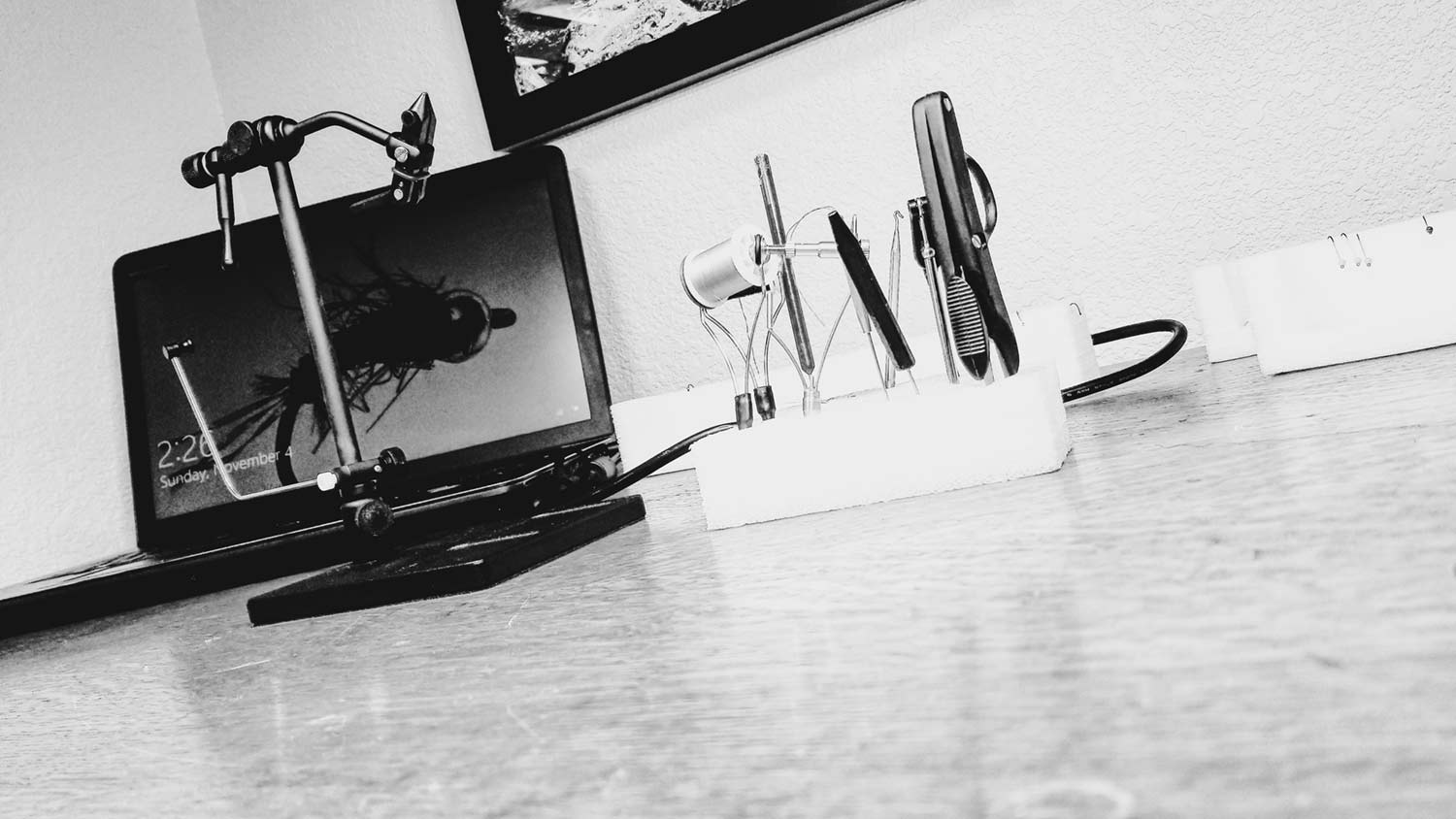
By Bob Reece
WINTER HAS ARRIVED IN MY HOME STATE OF WYOMING. FOR ME, THIS SIGNALS THE START OF MY “TYING SEASON”. AS A FIRST STEP ON THIS FIVE MONTH JOURNEY, I FOCUS ON THE CLEANLINESS OF MY TYING DESK.
This may be a sore subject for some and emotionally disturbing for others. I’ve seen the surfaces of enough tying platforms over the years to know that they can quickly turn into a chaotic heap of fluff and debris. I’m not here to judge, just to offer suggestions on how to prevent chaos and increase the number of flies that you tie.
I am huge believer in the fact that organization is the foundation of maintaining cleanliness on my tying table. When those two factors coexist, the number of flies that I am able to tie significantly increases. That organization starts inside the drawers of my desk.
In the past I maintained a typical setup of dedicating different storage compartments to different materials. Over the last couple years I’ve moved away from that focus. Instead, I now use plastic organizers and Ziploc bags to group the materials that I use for specific patterns. Every pattern that
Read More »Three Tips for Casting in the Wind
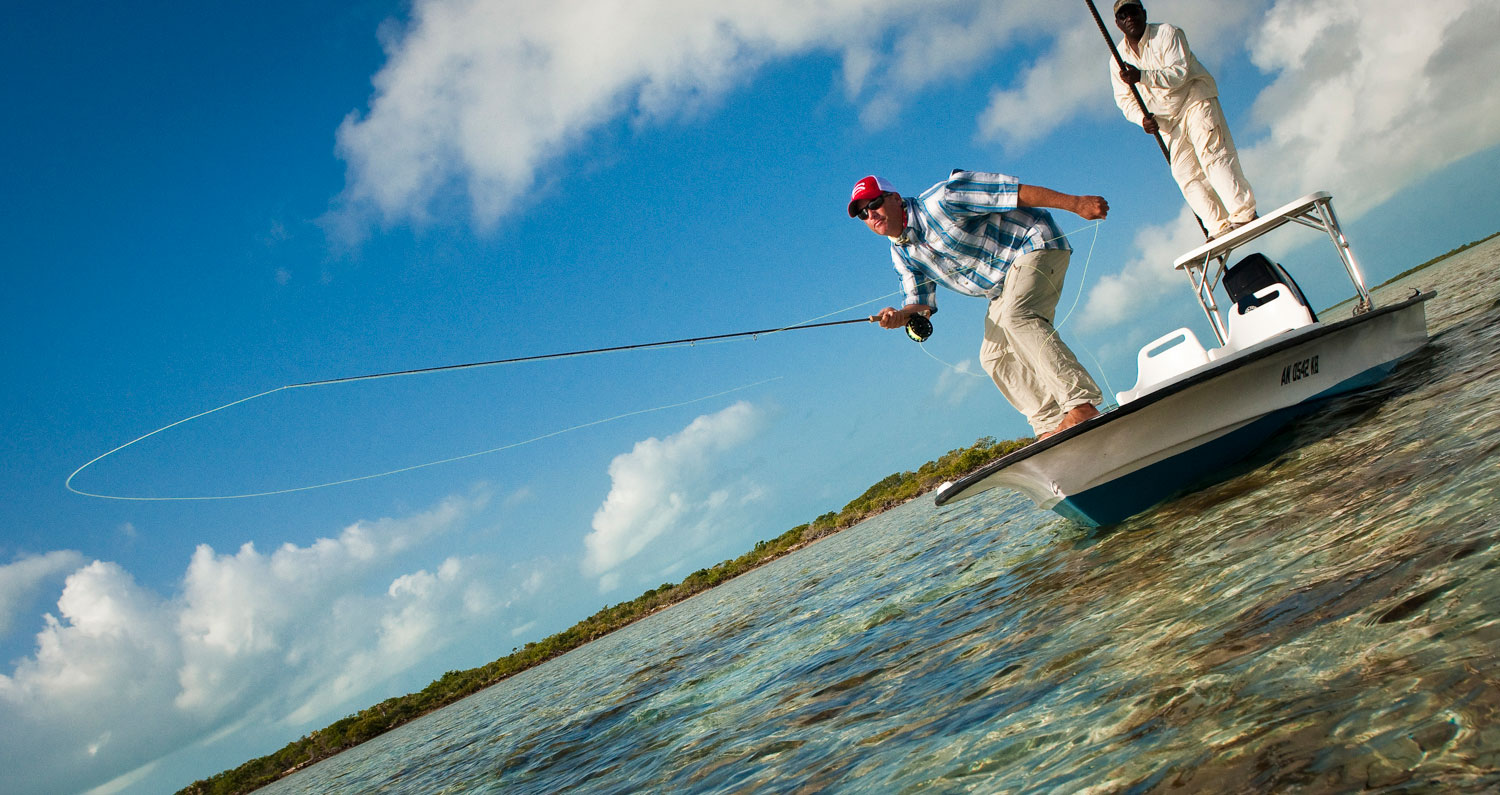
By Bruce Chard
WHEN YOU’RE FLY FISHING IN SALTWATER THERE IS ALMOST ALWAYS WIND.
Saltwater fly fishing demands your A-game. Your presentations have to be spot on and when the wind is howling, it will test your angling mettle. If you’re new to the game, it’s intimidating but having and practicing the right skills can give you the confidence you need to deliver.
Here are three tips that will help you tame the wind
Make tight loops
Having the ability to form tight loops while casting in the salt will help in many ways.
Tight Loops help:
•Control line in the air for better accuracy
•Increase line speed
•Reduce slack in the line during casting and presentation
•Increase distance
•Fight the wind
•Lay your leader and fly out straight with no slack
Whether you are wading or in the skiff, a tight loop is vital to success in the salt. To form a tight loop you need to do the following:
•Keep your rod tip traveling
Read More »Tie The White Marabou Streamer
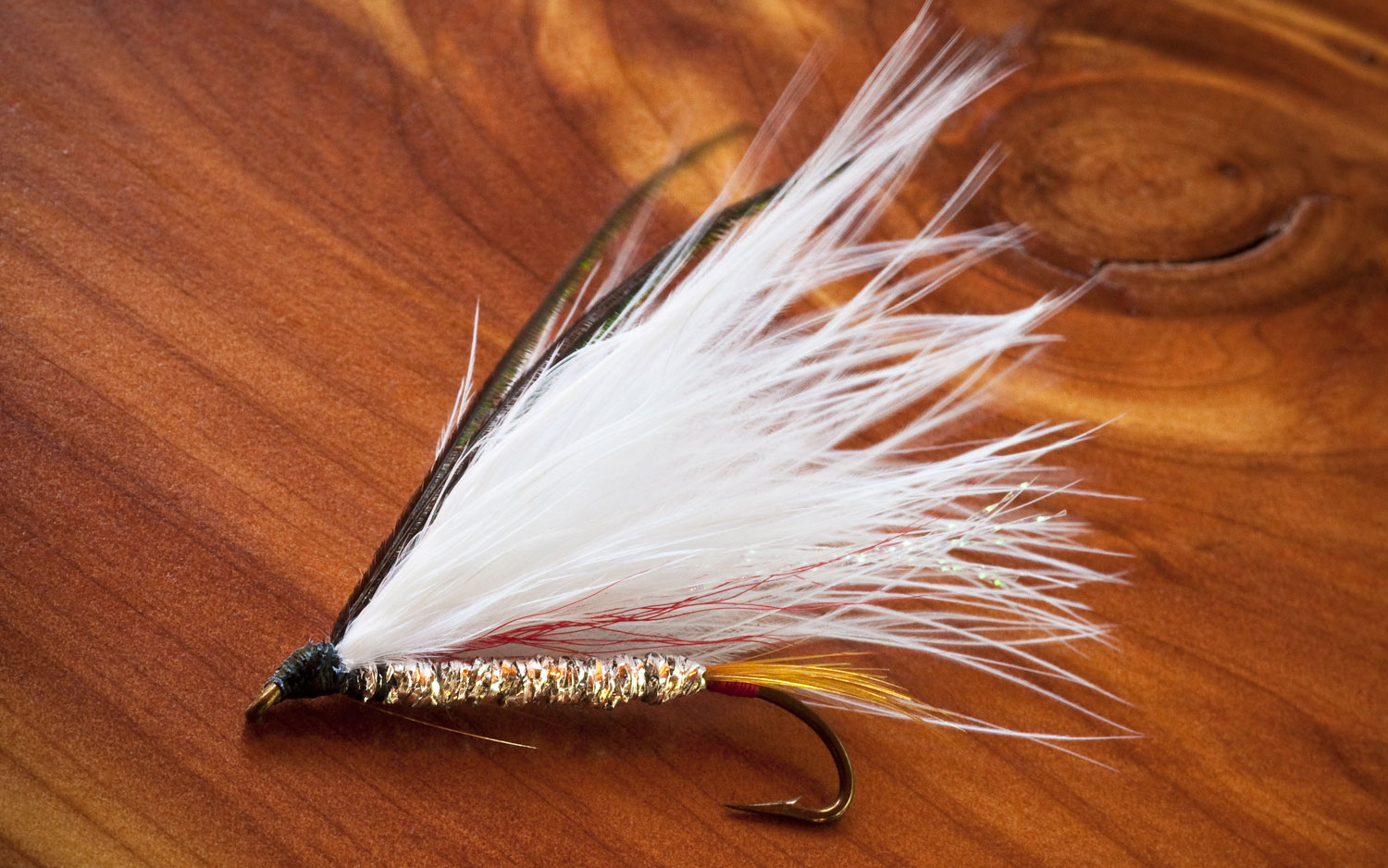
MY GOOD FRIEND DAN FLYNN GREW UP IN MAINE CHASING THE GIANT BROOK TROUT IN THE RANGELEY LAKES REGION.
These days you can find him high in the headwaters of the Southern Appalachians after the local brookies or tied into a big wild brown downstream. The geography may have changed but there is still a lot of Maine in his tying.
Dan ties and fishes several old school Maine flies with great success here in the Southeast. One of my favorites is this classic White Marabou Streamer. This fly is a stream vacuum anywhere you fish it. Check out the video and tie a few up. I promise they will put you on some trout.
Read More »Kiss the Bank with Your Terrestrials
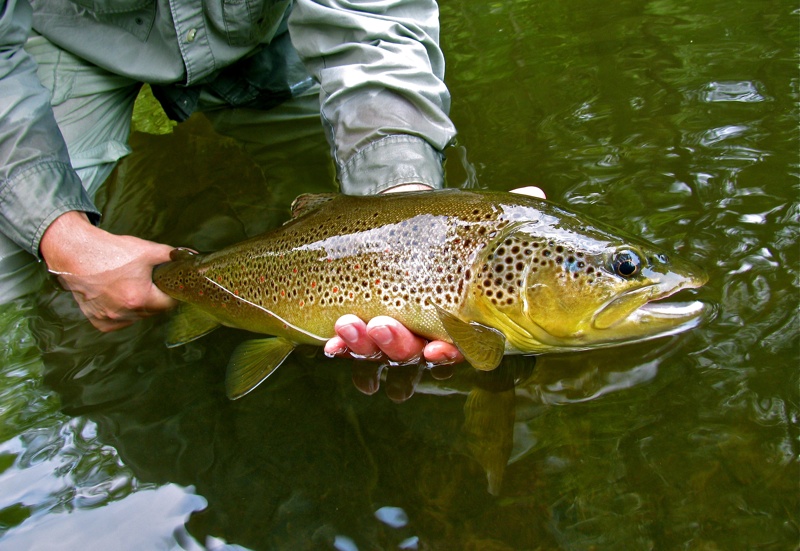
One of the best times of the year to catch big brown trout is during the summer months.
When the terrestrial bite is in full swing, brown trout will often tuck up under overhanging foliage super tight to the banks. Often they’ll be in less than a foot of water waiting patiently for the land born insects to fall to the water for an easy meal. Targeting this habitat on the water will increase your brown trout catch ratio over rainbow trout. Although rainbow trout will utilize overhanging foliage, they still prefer foam lines with current and deeper water for the most part.
Target Overhanging Foliage
This beast above devoured a beetle pattern that was placed perfectly in the strike zone. Kiss the banks with your terrestrials targeting undercut banks and overhanging foliage, and you could land a trophy like this. Just because they’re isn’t current doesn’t mean it won’t hold a good trout. The main factor is
Don’t Tread on my Redd
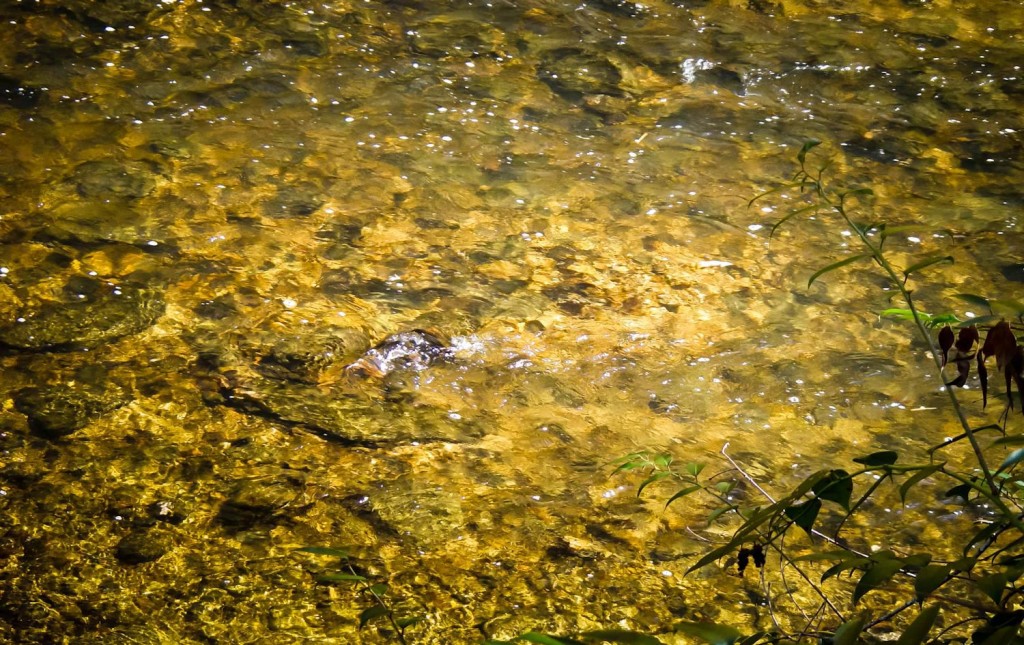
THIS IS THE TIME OF YEAR WHEN TROUT, AS WELL AS OTHER COLD WATER FISH, PUT ON THEIR BARRY WHITE RECORDS, OPEN A BOTTLE OF COURVOISIER AND GET BUSY.
Brown trout and brook trout spawn in the fall and rainbow and cutthroats in the spring. Exact spawning times vary a bit from region to region and year to year but that’s the gist of it. Chubs, suckers, shiners, sculpins and other baitfish that make up an important part of the trouts diet are spawning all through the cooler months as well.
Trout lay their eggs in gravel. This gravel is key to the fry’s survival. They will find a spot where there is a consistent flow of well oxygenated water with a consistent depth of a foot or so, out of direct sun. The female will use her tail to clean the silt from a patch of gravel creating a redd where she will lay her eggs.
Fish do not hatch like birds or reptiles. They sort of pop out on top of the egg which stays attached to their belly and serves as a source of nutrition until the fry is big enough to forage for food. These sack fry are quite vulnerable. They hover over the redd and when predators approach they disappear into the gravel for protection.
Trout will generally move to the headwaters of streams to spawn but redds can be found anywhere the conditions are right. They appear as bright spots of clean gravel from one to three feet in diameter. Some are pronounced when surrounded by silt. In places where the gravel is clean they can be subtile depressions in the stream bed.
As anglers we must be aware of the presents of redds and wade with care. Stepping in redds can spoil eggs or crush sack fry hiding in the gravel and seriously effect trout reproduction. Even baitfish redds should be
Read More »Just Another 20-Inch Rainbow
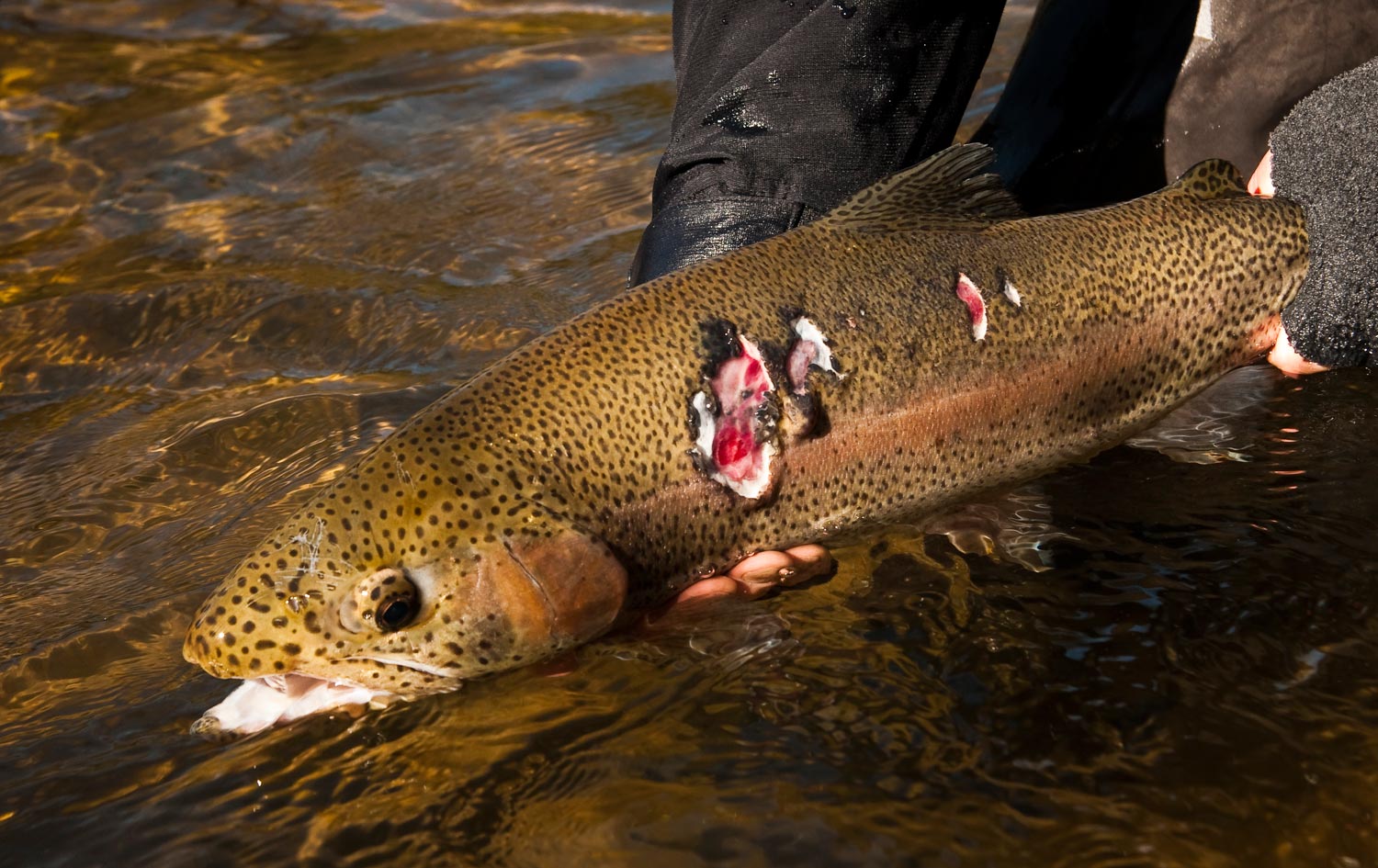
IT’S FUNNY HOW QUICKLY WE BECOME SPOILED.
My buddy Dan takes photos a lot of fish. Not hoisted hero shots or epic scenes, just a quick shot of fish in the net or in his hand, held gently in the water. They aren’t trophies exactly, just documents. Records of fish from different streams at different times of year. A sort of long term study of trout. A visual history.
He has photo albums, stacked hip deep, stuffed with prints from the days of film. These days they go into meticulously organized folders on the computer. Some go into an endless screen saver, which I’ve never seen repeat.
It might seem a little odd at first but once you get him talking about fish, you quickly see what’s going on. You’ll get to talking about a certain stream or species and how they might be affected by some event and Dan will pull out an old album and turn to the exact page and show you a fish caught twenty years ago. Then he will scroll through the computer and show you a fish from the same stream, caught in the same month last year.
Maybe I’ve seen too many Sci-Fi flicks but it’s easy to imagine a scenario where fish have become extinct and all that’s left is Dan’s visual archive. We may thank him one day.
Louis Cahill PhotographyThere is a period of time, about ten years ago, that Dan and I refer to as, “The good old days.” Dan had bought a piece of land on a trout stream in the mountains and the little creek was loaded with beautiful wild fish. Most of the surrounding land was old farm land, which had been let go and almost no one fished the creek. Dan and another neighbor started throwing a little trout chow in the creek and the next thing you know, it was Jurassic Park.
The farm was sold and it all went to hell, like ‘good old days’ always do but for a while it was a remarkable piece of water. Fishing that little creek made you feel like a rock star. Every time your line came tight, you were tied into a trophy. Dan wore out a couple of cameras down there in the creek.
On one especially epic day, I noticed Dan releasing a toad without shooting a photo.
“What, no photo?” I asked.
Reece’s Masked Bandit
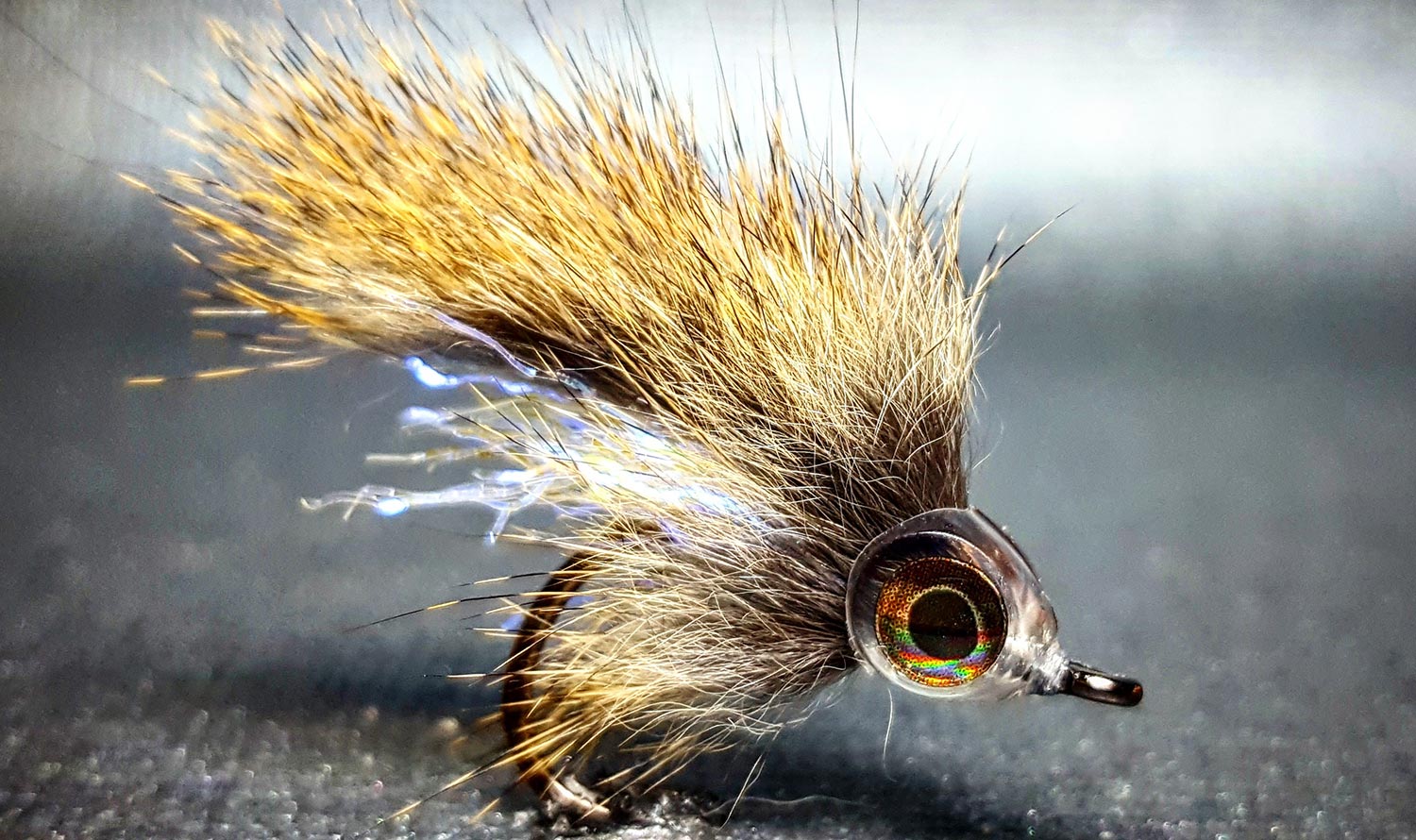
By Bob Reece
In the world of streamers, bigger is not always better.
The majority of forage fish found in flowing or still waters are quite small. I believe that to optimize the success of streamer fishing, a fly fisher must make some adjustments to their typical streamer selection.
Good foundations are essential to highly effective patterns. For this reason, I chose the Gamakatsu Octopus hook. Its combination of short shank and offset point result in an exceptional ability to penetrate and hold in the jaws of large fish. A tapered head and large eyes are perhaps the most prominent feature of the shiners, chubs, dace and other species that this fly can imitate. The Fish Mask and Living Eyes provide a perfect representation of these. They also save valuable tying time at the vise compared to creating heads with epoxies and glues. Equally as important to the effectiveness of this pattern are the pine squirrel strips. The mottled color of the fur provides an accurate imitation of scales and fins of the naturals.
I’ve never hear a fly fisher complain about catching more fish or big fish. When properly presented, the Masked Bandit will lead to both of these outcomes. While smaller than its typical streamer companions, this pattern is more than capable of producing big results.
Watch the video and learn to tie Reece’s Masked bandit.
Read More »10 Inexpensive Fly Fishing Life Hacks From The Home Depot
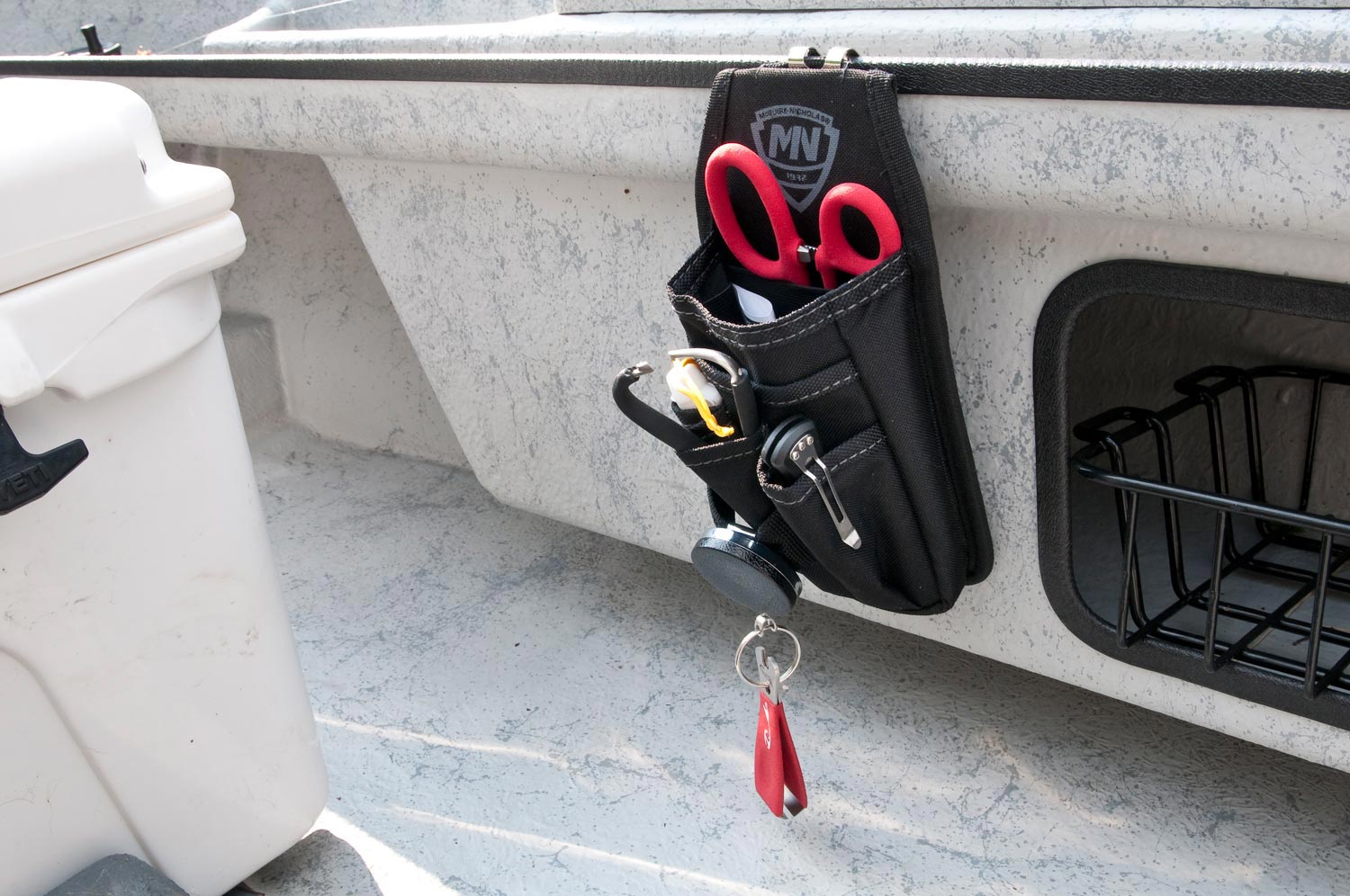
By Louis Cahill
EVERYONE WANTS THEIR LIFE TO BE EASIER AND EVERYONE LIKES TO SAVE MONEY.
Here are 10 handy and inexpensive items you can repurpose to accomplish both. You can pick all of them up at the local Home Depot or order them online. I’ll supply links to each. Some of them are so obvious you’re probably using them already, but I guarantee there’s at least one thing on the list that you haven’t thought of and will love.
TOOL HOLSTER $10
This tool holster by McGuire Nicholas is made for a tool belt but is right at home when clipped to the edge of a drift boat or boat bag. It holds all of your frequently used fishing tools and supplies and can be easily moved around the boat so your stuff is always handy. There are endless variations so it will be easy to find one to hold whatever you need. I outfitted mine with a superintendent’s keychain for my nippers.
ANCHOR KEEPER $3
This oversized carabiner is made by Husky for drop chords. It’s the easiest way I’ve found to handle a boat anchor. You can clip it into the anchor ring and carry it easily by the padded rubber handle. The real benefit cones when you get to the car. If you drive an SUV like I do, having an anchor in the truck is a real hazard. If you crash, that hunk of metal is coming up to the front seat in a hurry. Use the Husky carabiner to secure it to a seat belt or tie down and you’re rolling safe.
EASY DRY ZIP POCKET ORGANIZERS $7
These handy zippered pouches from Husky can be used to keep up with anything. I really like them for Spey heads. The mesh panels allow the contents to dry quickly and you can see what’s inside without opening the zipper. A tab with a grommet allows them to be stacked on a carabiner.
FLY TYING TRAVEL BAG $38
This canvas tool bag, made by Husky, is great for taking your tying kit on road trips. It will hold a ton of feathers and fur as well as your hooks, tools and leader material. It has handy pockets for special items like the Clear Cure UV flashlight.
GOPRO BOOM $19
This five foot painters pole, made by Shur-Line is the bomb for shooting fishing photos and video with the GoPro. It collapses to about two feet and extends effortlessly. Submerging it in water doesn’t hurt it so go for the underwater shot or the overhead. A GoPro mount is easy to attach via a 1/4-20 bolt.
Read More »10 Tips For Spotting Permit
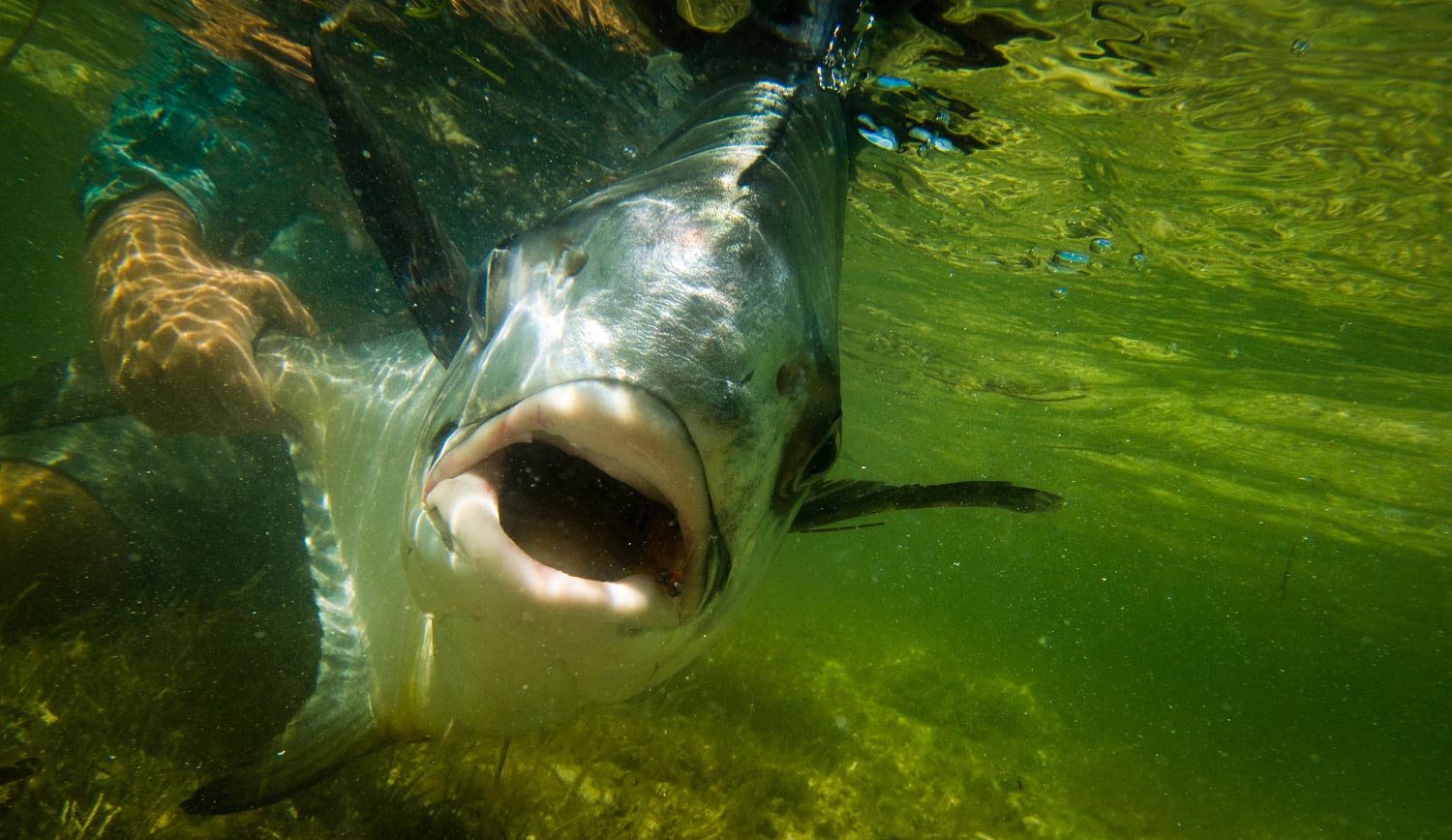
PERHAPS THE LOFTIEST GOAL IN FLY FISHING IS CATCHING A PERMIT.
Maybe it’s not your thing but if there truly is a fish of ten-thousand casts, it’s the permit. There is enough to catching permit to fill a bookshelf or magazine rack. It’s a complicated game, but where it starts is simple. To catch a permit, you must find a permit. And to find a permit, the angler must know what to look for. With that in mind, here are 10 tips to help you spot a permit.
Have the right glasses
This is stupid simple but it really is the most important piece of equipment for the saltwater angler. There is no replacement for quality polarized sunglasses. Good saltwater glasses have a rosy color to the lenses. Pass on green or grey. Copper, rose or brown will offer better contrast. A lighter tint to the lens is valuable on darker days and a frame that shade your eyes is a plus. Glass lenses offer the sharpest vision and, unless you have a heavy coke-bottle prescription, that’s what I recommend.
Tails
The long, graceful forked tail of the permit is its most distinctive feature. It is black in color and stands out when the fish shows its profile. Often the permit’s broad, silver body disappears completely and it is the black double sickle tail that gives him away. This sight is never more exciting than when the tail is held up out of the water. Called ‘”tailing” this happens when the fish feeds off the bottom in shallow water. This means that the fish is actively feeding and the chances of him eating your fly are good.
Spikes
The permit’s long, sickle-shaped dorsal fin will often give him away. When the fish is
